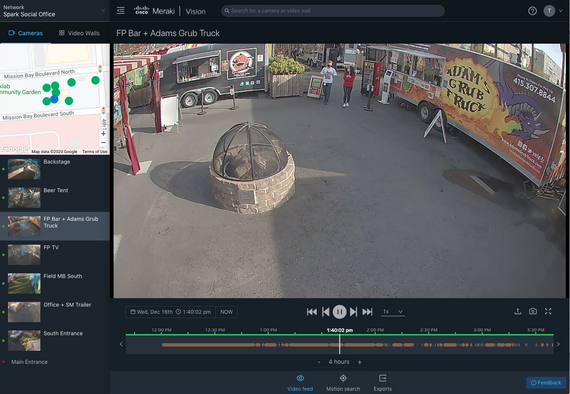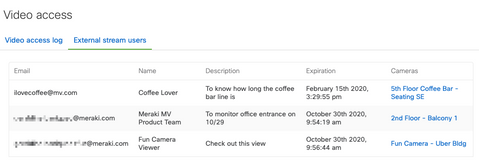Turn on suggestions
Auto-suggest helps you quickly narrow down your search results by suggesting possible matches as you type.
Become a member of the Cisco Meraki Community today
Get answers from our community of experts in record time.
Join now- Feature Announcements
- :
- Feature Announcements - Page 2
Feature Announcements - Page 2
Options
- Mark all as New
- Mark all as Read
- Float this item to the top
- Subscribe
- Bookmark
- Subscribe to RSS Feed
Showing articles with label MV Cameras.
Show all articles
908
Views
Labels:
-
MV Cameras
1100
Views
Email Updates
Subscribe here if you would like to receive the latest news and announcements from Meraki — just click on the Subscribe button above.
To filter to see a particular kind of update, click the Labels below.
By selecting labels, you can also subscribe to only updates matching the chosen label(s).
Labels
-
API & Webhooks
25 -
Beta
38 -
Breaking changes
9 -
Catalyst
20 -
Cisco Secure Connect
2 -
Features
204 -
Firmware
35 -
Meraki Health
22 -
MG Wireless WAN
10 -
MI Insight
17 -
Mobile App
9 -
MR Wireless
60 -
MS Switch
58 -
MT Sensors
29 -
MV Cameras
49 -
MX Security & SD-WAN
46 -
Products
82 -
SASE
3 -
SM Endpoint Management
35
- « Previous
- Next »
Top Kudoed Posts
| Subject | Kudos |
|---|---|
| 30 | |
| 23 | |
| 22 | |
| 21 | |
| 20 |
Subscribe
Get the latest updates from the Feature Announcements blog delivered to your email inbox.
© 2025 Cisco Systems, Inc.









